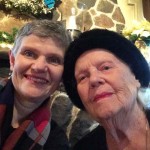In the classic children’s book, Oh, The Places You’ll Go!, author Dr. Seuss (Theodor Seuss Geisel) begins with:
Congratulations!
Today is your day.
You’re off to Great Places!
You’re off and away!
How wonderful that children are given a glimpse of possibility at such a young age. Let me remind you that at any age you can still dream and imagine the possibilities that lie ahead of you in your life.
When I received my Master of Arts degree in Interpersonal Communication in 1997, the commencement speaker used the theme, Oh, The Places You’ll Go! A smart move because most of the graduates in the auditorium that day grew up reading Dr. Seuss books. Many could recite chapter and verse.
You have brains in your head.
You have feet in your shoes.
You can steer yourself
any direction you choose.
As you embark on a new year’s journey, consider the places you want to go that haven’t quite made it to your priority list. They may reside in the recesses of your brain. You may think about doing them more than actually doing them. What would it take for you to focus on what you want in your life? I use a simple A-B-C method, as outlined in my book, Everything I Do Positions Me: The Simple Path to Professional Success. The key word here is simple. Here it is:
A: Where are you currently positioned? (your current status, current behavior)
C: Fast forward to Where do you want to be positioned? What is your ultimate goal? Your desired future?
B: What sandwiches the gap between A (here and now) and C (the future) is B. What action steps will get you to C?
Example:
A: Poor presentation skills. (current)
C: Polished presenter. (future)
B: Action steps:
- Attend a presentations workshop.
- Join a Toastmasters group.
- Ask my boss to give me more presentation assignments.
- Practice in front of the mirror two hours weekly.
- Submit a proposal to present at a national professional association conference.
You get the picture. You can go anywhere you want in your career and life. Focus on the things you want most. Create the action steps to get you there. Enjoy the results. It’s that simple.
You’ll be on your way up!
You’ll be seeing great sights!
You’ll join the high fliers
who soar to high heights.
Visit Seussville or Amazon to order your own copy of Oh, The Places You’ll Go! to keep you motivated! Watch a short YouTube video of the book, read by actor John Lithgow.
Title and quotes are copyrighted material, Dr. Seuss Enterprises.










